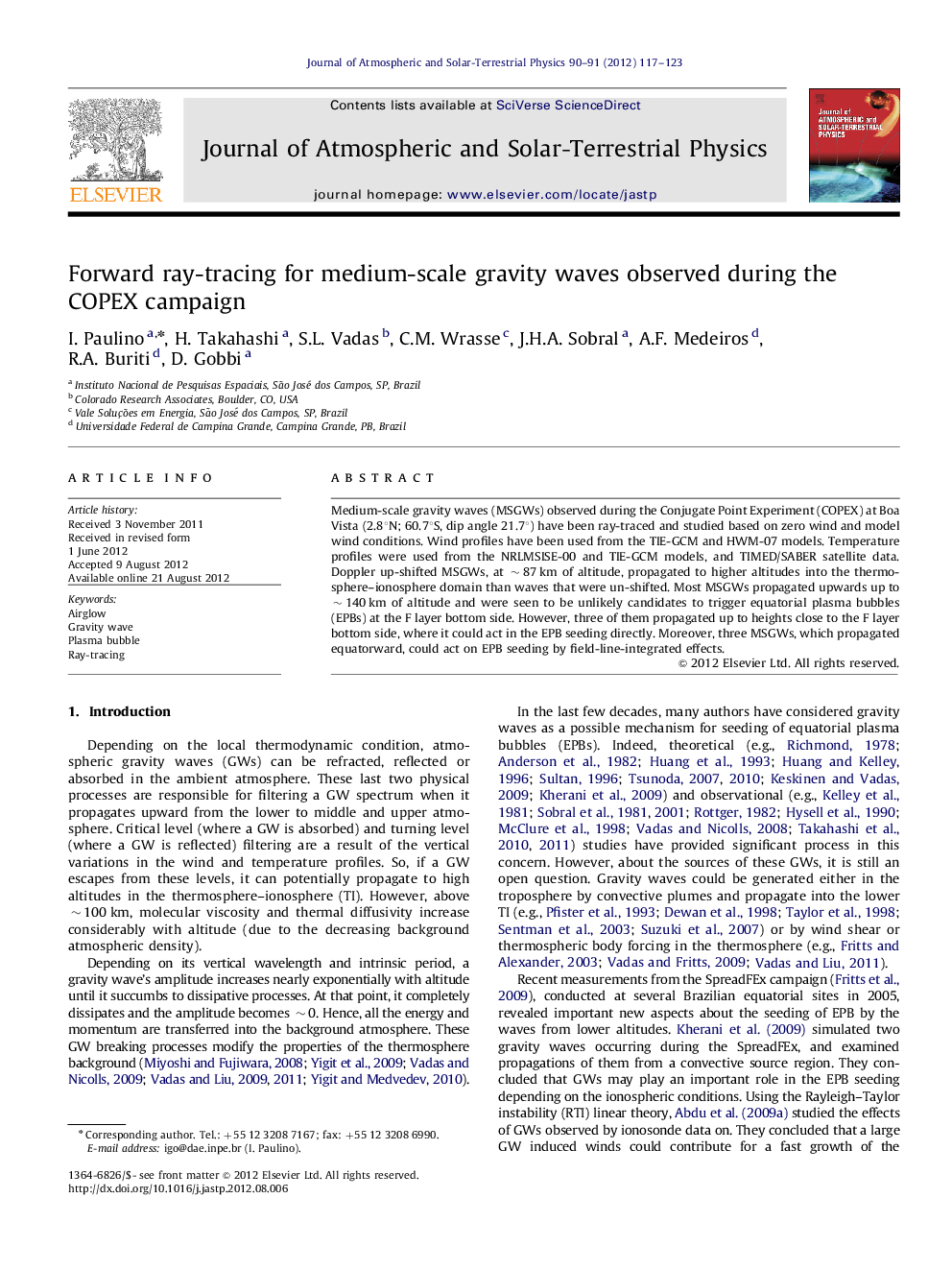| Article ID | Journal | Published Year | Pages | File Type |
|---|---|---|---|---|
| 1776812 | Journal of Atmospheric and Solar-Terrestrial Physics | 2012 | 7 Pages |
Medium-scale gravity waves (MSGWs) observed during the Conjugate Point Experiment (COPEX) at Boa Vista (2.8°N; 60.7°S, dip angle 21.7°) have been ray-traced and studied based on zero wind and model wind conditions. Wind profiles have been used from the TIE-GCM and HWM-07 models. Temperature profiles were used from the NRLMSISE-00 and TIE-GCM models, and TIMED/SABER satellite data. Doppler up-shifted MSGWs, at ∼87km of altitude, propagated to higher altitudes into the thermosphere–ionosphere domain than waves that were un-shifted. Most MSGWs propagated upwards up to ∼140km of altitude and were seen to be unlikely candidates to trigger equatorial plasma bubbles (EPBs) at the F layer bottom side. However, three of them propagated up to heights close to the F layer bottom side, where it could act in the EPB seeding directly. Moreover, three MSGWs, which propagated equatorward, could act on EPB seeding by field-line-integrated effects.
► 15 medium scale gravity waves (MSGWs) observed during the COPEX campaign were ray-traced. ► Zero wind and model wind conditions were used and compared. ► Most of the MSGWs propagated up to ∼140km of altitude in the thermosphere-ionosphere (TI). ► Three MSGWs reached altitudes close to the F layer bottom side. ► Up-shifted MSGWs, at OH layer, reached higher altitudes and had larger amplitudes in the TI.
